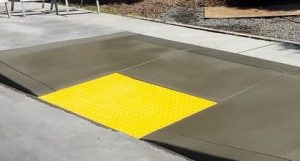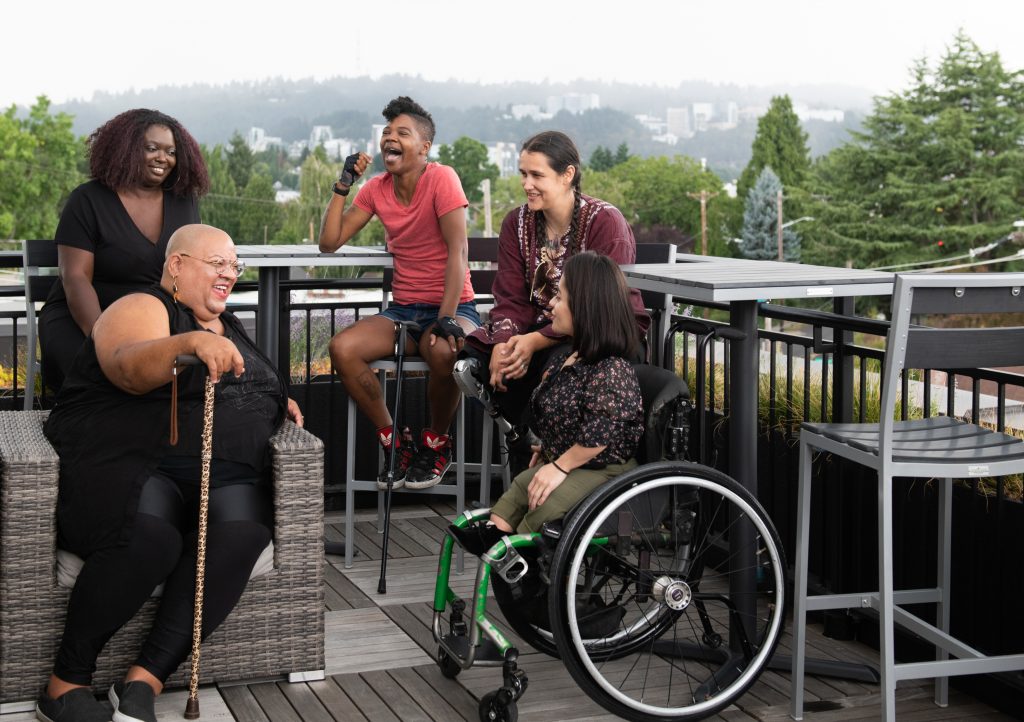7 Diversity of Abilities
Diversity of Abilities
Rebecca Hiebert
The people we work with at college or in the workplace may have diverse abilities. People may wear glasses, walk with a cane, use a wheelchair, or use other assistive devices. People may have developed effective coping strategies to manage their disabilities. We can make choices in how we interact with others in order to make it equitable for those with disabilities to participate.
While you read, consider the following:
- What information is new?
- What did I used to think?
- How can I use this information to welcome others?
Multiple Perspectives
Imagine that you are standing in front of a closed door. On the other side of that door is a world of information — news, entertainment, job listings, and updates from family and friends. You see other people enter that doorway, but you can’t find a way to enter.
People with disabilities come up against locked doors in the digital world continually.[1]
Accessibility
When working with others, we can open the door to make information more available by choosing to increase accessibility. When we make things more accessible, we create a space where everyone can contribute.
 |
 |
 |
If you’ve used a sidewalk ramp, eyeglasses, or video subtitles, you’ve used assistive technology that aids with accessibility.
Accessibility, when it comes to digital content, is often compared to a sidewalk ramp or curb cut — it’s a feature that ends up benefitting all people, not just those with mobility issues.
Diverse Abilities and Accessibility
There are many reasons why people may be experiencing varying degrees of auditory, cognitive, physical, speech, and visual disabilities. For instance, some may have disabilities from birth, an illness, a disease, or an accident, or they may develop impairments with age. Some may not consider themselves to have disabilities even if they do experience such functional limitations.
Here’s a breakdown of the different barriers and how we can be inclusive:[2]
Visual
Diversity of visual abilities may include people with low or no vision or people with colour blindness. Accessibility may include:
- enlarging or reducing text size and images;
- using appropriate font colour and background (for more information on colour blindness, click this link.; to check if the colours you are using are colour-blind-friendly, click this link);
- using appropriate headings for text-to-speech readers.
Auditory
Diversity of auditory abilities may include people with low or no hearing. Accessibility may include:
- adding captions and subtitles to audio or video and including transcripts;
- using high-quality audio with limited background noise;
- providing a sign-language interpreter.
Mobility
Diversity of mobility may include people with weakness and limitations due to muscular control or physical form and people experiencing chronic pain. Accessibility may include:
- using a specifically designed keyboard or mouse;
- using mobile aids, such as a cane or wheelchair;
- using voice recognition, eye tracking, or other hands-free interactions.
Cognitive, Learning, or Neurodivergent
Diversity of cognitive, learning, or neurodivergent abilities may include people with neurological challenges that may affect how well they hear, see, speak, and understand information. Accessibility may include:
- ensuring content is written in plain language;
- structuring content with consistent formatting;
- providing different ways of navigating a website (for example, a menu and a search bar);
- providing options to suppress blinking, flashing, or flickering content.
Speech
Diversity of speech abilities may include people who have difficulty producing speech that is recognizable by others. Accessibility may include:
- providing alternative modes of interaction for applications that use voice commands;
- communicating using email, messaging, or feedback forms instead of telephone communication;
- using high-quality microphones to capture or enhance the vocal message.

Key Takeaways
In college, you may meet people who use a variety of strategies and accommodations to overcome ability challenges. You can improve interactions with others by taking the above considerations into account so everyone can contribute to activities or conversations with minimal accommodations.
- Adapted from https://docslib.org/doc/9569501/enabling-access-through-web-renewal-handbook ↵
- Understanding Document Accessibility by The Chang School, Toronto Metropolitan University. Licensed under a Creative Commons Attribution-ShareAlike 4.0 International License. https://pressbooks.library.ryerson.ca/docs/chapter/about-accessibility/ ↵

